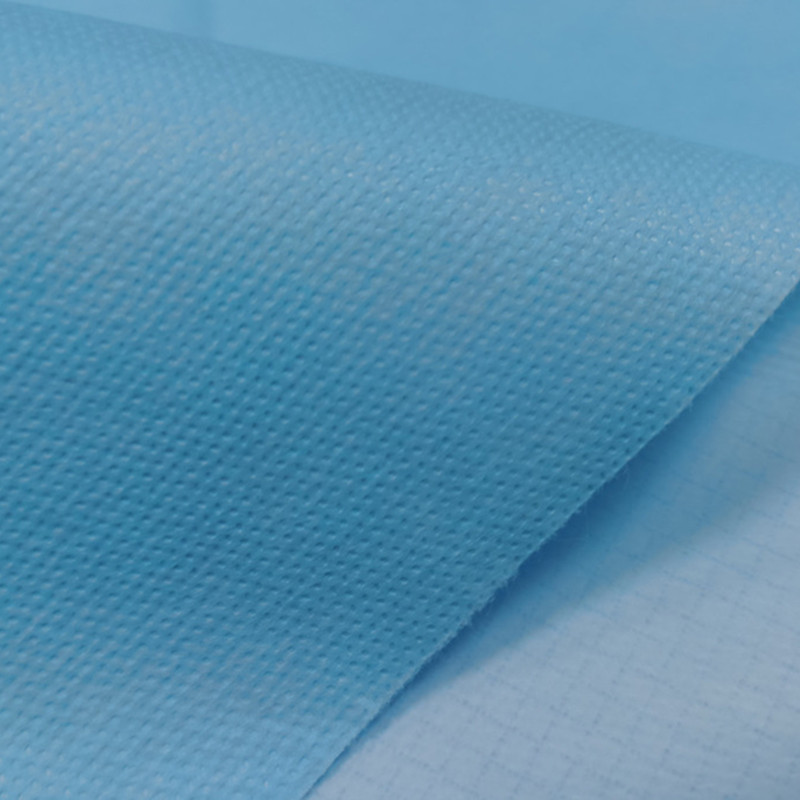SSMMS Non Woven Fabric
Spunbond and meltblown fabrics are layered together to create the composite material known as SSMMS nonwoven fabric. The order of these layers in the fabric is where the term “SSMMS” originates. Spunbond and meltblown layers come together to create a fabric with remarkable qualities that may be used in a variety of ways.
Spunbond Layers: Polypropylene granules are extruded into fine fibers, which are subsequently spun into a web to create spunbond layers. Pressure and heat are then used to fuse this web together. The SSMMS fabric is made strong and durable by spunbond layers.
Meltblown Layers: To make microfibers, polypropylene granules are melted and then extruded through a high-velocity air stream. After that, a nonwoven fabric is created by randomly depositing these microfibers. The SSMMS fabric’s filtration and barrier qualities are enhanced by meltblown layers.
These layers work together to create the SSMMS fabric, which is a robust yet lightweight textile. It is very desirable for applications where protection and filtration are crucial due to its strong filtering capabilities.
Characteristics of Nonwoven SSMMS Fabric
High Tensile Strength and Durability: SSMMS’s spunbond layers provide the fabric a high tensile strength and durability, which makes it ideal for uses requiring enduring performance.
Excellent Barrier Properties: SSMMS fabric performs well in situations where it is essential to protect against fluids, particles, or pathogens due to the exceptional barrier qualities provided by the meltblown layers.
Softness and Comfort: SSMMS fabric is suited for use in medical gowns, giene products, and other applications where comfort is crucial since, despite its strength, it is soft and easy to wear.
Fluid Resistance: SSMMS fabric has a high level of liquid resistance, which makes it perfect for curtains, medical gowns, and other protective clothes items that need to be shielded from contaminants like blood.
Breathability: SSMMS fabric’s ability to breathe makes it suitable for usage in situations where comfort and moisture management are crucial. This is especially important for giene and medicinal items.
Filtration Efficiency: SSMMS fabric is a top option for face masks, surgical gowns, and air filtration applications because of its outstanding filtration qualities.
Applications of SSMMS Nonwoven Fabric
Medical and Healthcare
Surgical Gowns: Because of its strength, breathability, and barrier qualities, SSMMS fabric is frequently utilized in the manufacture of surgical gowns.
Face Masks: SSMMS fabric’s high filtration efficiency makes it perfect for use in the production of N95 and surgical masks.
coverings and Drapes: Sterile coverings and drapes for surgical operations are made from SSMMS fabric.
Hygiene Products: Because of its softness and fluid resistance, it is utilized in the manufacturing of sanitary napkins, adult incontinence products, and diapers.
Equipment for personal protection (PPE)
Protective coveralls and aprons for use in a variety of industrial and healthcare environments are made with SSMMS fabric.
Manufacturing Process of SSMMS Nonwoven Fabric
Spunbond Layers: The formation of the spunbond layers marks the start of the procedure. Continuous filaments are created by melting polypropylene granules and then extruding them through a spinneret. To make fine fibers, these filaments are stretched and cooled. These spun fibers are placed onto a conveyor belt to create the spunbond layers. After that, pressure and heat are used to fuse the fibers together.
Layers Meltblown: The next stage is the creation of the meltblown layers. Granules of polypropylene are melted and extruded through a distinct kind of spinneret, which breaks the extruded polymer into microfibers using high-velocity air streams. A nonwoven web is created by gathering these microfibers on a conveyor belt and bonding them together.
Layer Combination: To create the SSMMS fabric, the spunbond and meltblown layers are mixed in a particular order (Spunbond, Spunbond, Meltblown, Meltblown, Spunbond). Heat and pressure are used to fuse these layers together, creating a strong and cohesive composite material.
Finishing: Depending on the intended use, the SSMMS fabric may receive additional treatments like anti-static, anti-bacterial, or other finishes.
Professional technical engineer dedicated to guide you
According to your actual needs, choose the most reasonable overall design and planning procedures
